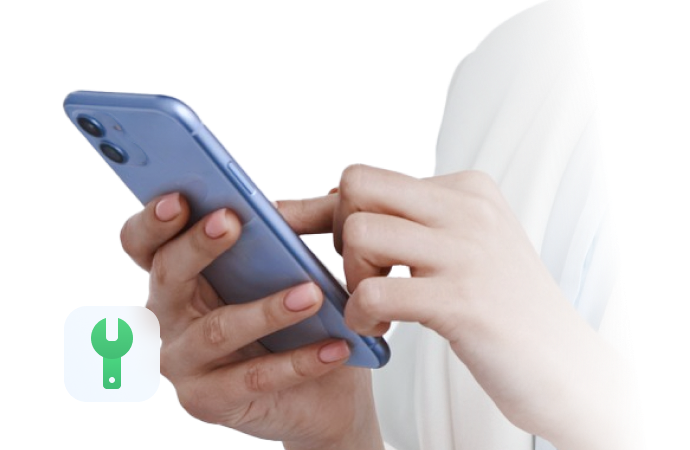
How To Fix iPhone 16 Lagging Issue: 11 Simple Fixes
Oct 13, 2025 • Filed to: Phone Repair Solutions • Proven solutions
Is your iPhone lagging and driving you crazy? You're not alone. When your iPhone is lagging, it can feel like your trusty device is letting you down. But don't worry! If your iPhone is running slow or your iPhone is working slow, we've got you covered.

This article will help you understand “Why my iPhone is lagging” and also why your iPhone is getting slow and provide simple fixes to get your iPhone moving fast again.
Whether your iPhone is going slow or you feel like your iPhone is working slow, we'll explore the common reasons behind this issue and offer 11 easy solutions. From basic troubleshooting to more advanced fixes, we'll guide you through the process of speeding up your lagging iPhone.
So, if you're tired of your iPhone running slow, keep reading to learn how to bring your device back to its normat state.
Part 1: iPhone 16 Lagging? Common Reasons!
iPhone lagging? Well, before we dive into the fixes, let's understand why your iPhone might be lagging. Here are some common reasons:
- Outdated iOS version
- Too many apps running in the background
- Low storage space
- Overloaded cache
- Buggy apps
- Hardware issues
- Network connectivity problems
- Battery health degradation
- Excessive notifications and background processes
- Poorly optimized settings
Dr.Fone Unlock Online - Free IMEI Check
iPhone 17 Is Here. Is Your Old Phone Ready to Sell?
Quickly check your iPhone or Android device status for free: Verify Blacklist, iCloud, Carrier Lock, and Warranty Status in Seconds. Ad-free, and globally.
Part 2: How to Fix iPhone 16 Lagging Issue: Best Fixes!
Now that we know the potential causes, let's explore 11 simple fixes to address your iPhone lagging issue.
Fix 1: Restart iPhone 16
One of the simplest yet most effective ways to fix a lagging iPhone is to restart it. This method can clear temporary files and refresh the system, often resolving minor glitches causing your iPhone to run slow.
iPhone getting slow? Here's how to restart your iPhone 16:
Step 1: Press and hold the side button along with one of the volume buttons until you see the power off slider. Move the slider to turn off your iPhone.

Step 2: Wait for around 30 seconds. Then, press and keep holding the button on the side until the Apple logo appears.
After your iPhone restarts, check if the lagging issue has improved. This simple step can often work wonders for an iPhone that's moving slow.
Fix 2: Clear Storage on iPhone 16
When your iPhone storage is nearly full, it can significantly slow down your device. Clearing some space can help your iPhone run more smoothly.
Follow these steps to clear your iPhone storage:
Step 1: Go to Settings > General > iPhone Storage. Review the storage breakdown and identify large files or apps you don't need.

Step 2: Delete unnecessary photos, videos, or apps.
Remember, keeping at least 10-15% of your storage free can help prevent your iPhone from getting slow.
Fix 3: Check for iOS Updates on iPhone 16
Outdated iOS versions can cause your iPhone to lag.
To check for and install iOS updates:
Step 1: Go to Settings > General > Software Update.

Step 2: If an update is available, tap ""Download and Install."" Make sure your iPhone is connected to Wi-Fi and a power source during the update.
Keeping your iOS up to date can often resolve issues causing your iPhone to work slow.
Fix 4: Update Applications on iPhone 16
Just like your iOS, outdated apps can cause your iPhone to lag.
iPhone going slow? Well, not anymore. Here's how to update your apps:
Step 1: Open the App Store. Tap on your profile picture icon.

Step 2: Scroll down to see available updates. Tap "Update All".
Regularly updating your apps can prevent them from causing your iPhone to run slow.
Fix 5: Disable Location Services on iPhone 16
While useful, location services can drain your battery and slow down your iPhone. Disabling them for apps that don't need your location can help improve performance.
To manage location services:
Step 1: Go to Settings > Privacy & Security > Location Services. Review the list of apps and their location permissions.

Step 2: Disable location access for apps that don't need it. For essential apps, consider changing the setting to "While Using the App" instead of "Always."
Optimizing your location services can help prevent your iPhone from lagging unnecessarily.
Fix 6: Disable Low Power Mode
While Low Power Mode can extend your battery life, it also reduces performance to save energy. If your iPhone is lagging, try disabling this feature.
To turn off Low Power Mode:
Step 1: Go to Settings > Battery.

Step 2: Toggle off Low Power Mode.
Alternatively, you can ask Siri to turn off Low Power Mode or use the Control Center.
Fix 7: Disable Automatic iCloud Backup
Automatic iCloud backups can slow down your iPhone, especially if they're occurring when you're actively using your device.
To disable automatic iCloud backups:
Step 1: Go to Settings > [Your Name] > iCloud > iCloud Backup.

Step 2: Toggle off "Back Up This iPhone."
You can still manually back up your iPhone when it's convenient, which can help prevent your iPhone from getting slow during important tasks.
Fix 8: Turn Off and Reconnect WiFi
Sometimes, network issues can cause your iPhone to lag, especially when using internet-dependent apps. Refreshing your WiFi connection can help.
Here's how to do it:
Step 1: Swipe down from the top-right corner to open Control Center. Tap the WiFi icon to turn it off.

Step 2: Wait for about 30 seconds. Tap the WiFi icon again to turn it back on.
This simple step can often resolve network-related issues that might be causing your iPhone to work slow.
Fix 9: Reset Network Settings on iPhone 16
If turning WiFi off and on doesn't help, you might need to reset your network settings. This will clear all saved WiFi passwords and cellular settings, potentially fixing deeper network issues.
To reset network settings:
Step 1: Go to Settings > General > Transfer or Reset iPhone > Reset. Tap "Reset Network Settings."

Step 2: Enter your passcode if prompted. Confirm by tapping "Reset Network Settings" again.
After resetting, you'll need to reconnect to WiFi networks and re-enter passwords, but this can often resolve persistent network-related lagging issues.
Fix 10: Disable the "Reduce Motion" Setting on iPhone 16
While the "Reduce Motion" setting is designed to help users who experience motion sickness, it can sometimes cause lag on older devices. Disabling it might help speed up your iPhone.
To turn off Reduce Motion:
Step 1: Go to Settings > Accessibility > Motion.

Step 2: Toggle off ""Reduce Motion.""
This change can make your iPhone feel more responsive, especially when navigating between apps.
Fix 11: Wipe Your iPhone 16
If none of the above methods work, you might need to take more drastic action. Wiping your iPhone and starting fresh can often resolve persistent lagging issues.
Before you proceed, make sure to back up your iPhone:
Step 1: Go to Settings > [Your Name] > iCloud > iCloud Backup.
Step 2: Tap ""Back Up Now.""
Once your backup is complete, follow these steps to wipe your iPhone:
Step 1: Go to Settings > General > Transfer or Reset iPhone.

Step 2: Tap ""Erase All Content and Settings."" Follow the on-screen instructions to complete the process.
After wiping your iPhone, you can restore it from your backup. This process can often resolve deep-seated issues causing your iPhone to run slow.
Part 3: Tried All Fixes and iPhone Still Lagging? Try Dr.Fone System Repair
If you've tried all the above fixes and your iPhone is still lagging, it might be time to consider a third-party solution like Dr.Fone - System Repair. This software can help diagnose and fix various iOS system issues that might be causing your iPhone to lag.

Dr.Fone - System Repair (iOS)
Repair iOS System Errors Without data loss.
- Only fix your iOS to normal, no data loss at all.
- Fix various iOS system issues stuck in recovery mode, white Apple logo, black screen, looping on start, etc.
- Downgrade iOS without iTunes at all.
- Work for all iPhone/iPad/iPod Touch, running on all iOS versions
Here's how to use Dr.Fone System Repair:
Step 1: Install Dr.Fone on your computer. Connect your iPhone to your computer using a USB cable. Launch Dr. Fone and select "System Repair."
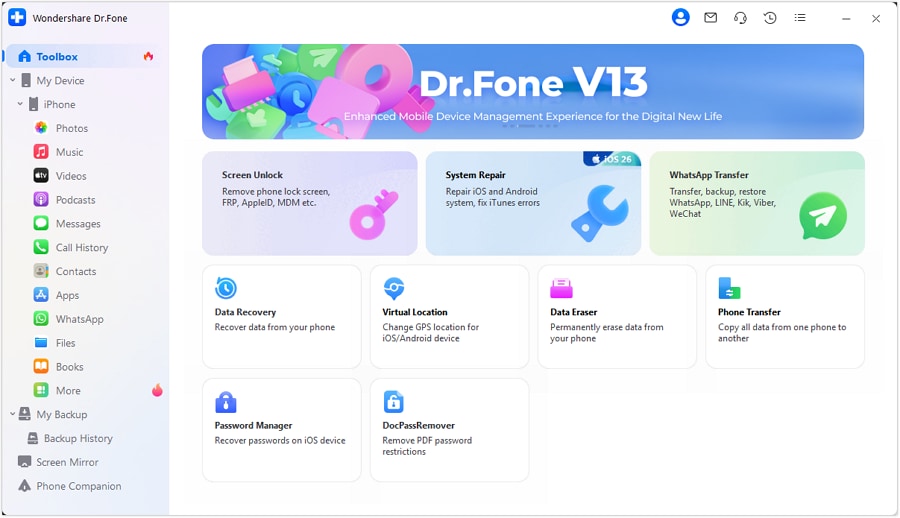
Step 2: In the new window, choose iOS Repair to begin the system repair process.
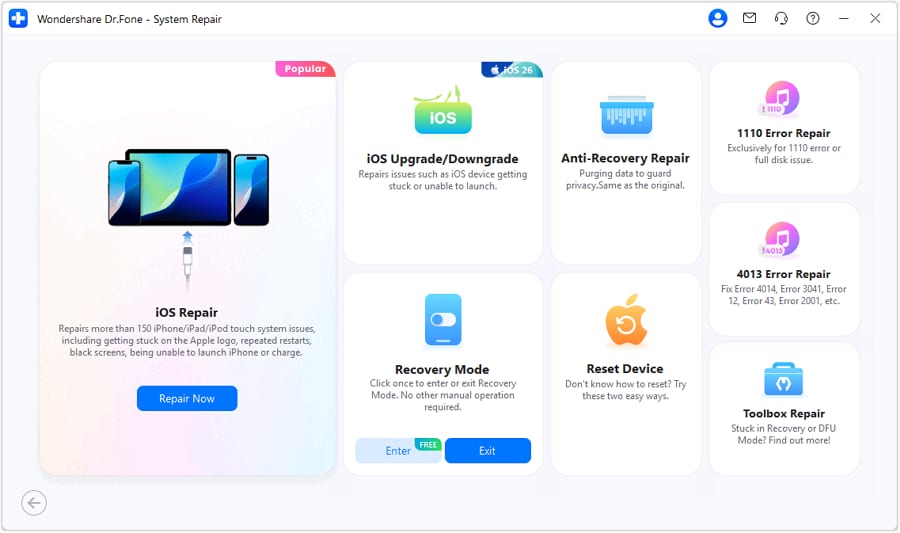
Step 3: Select Standard Repair to retain your data during the repair process.
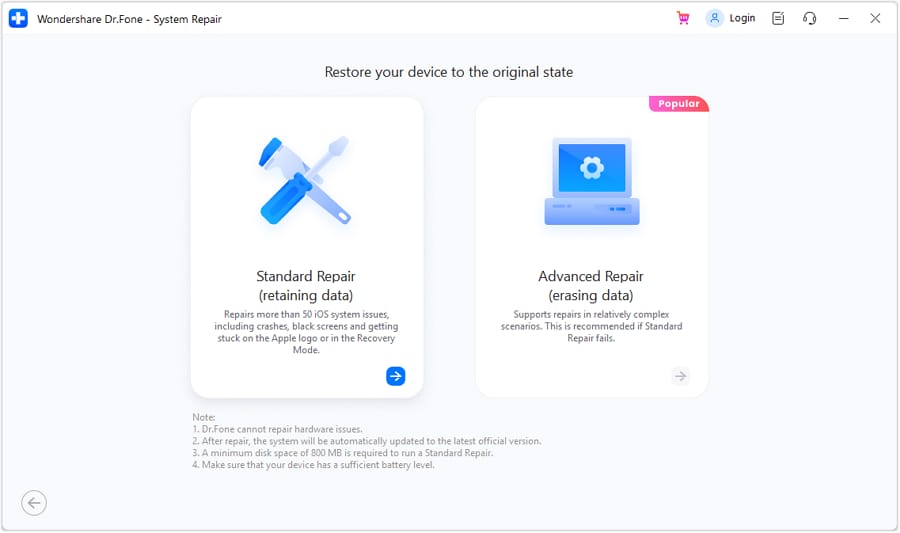
Step 4: Follow the on-screen instructions to put your iOS device into Recovery Mode. Tap Enter Recovery Mode once done. If your device is unresponsive, click Guide for detailed instructions.
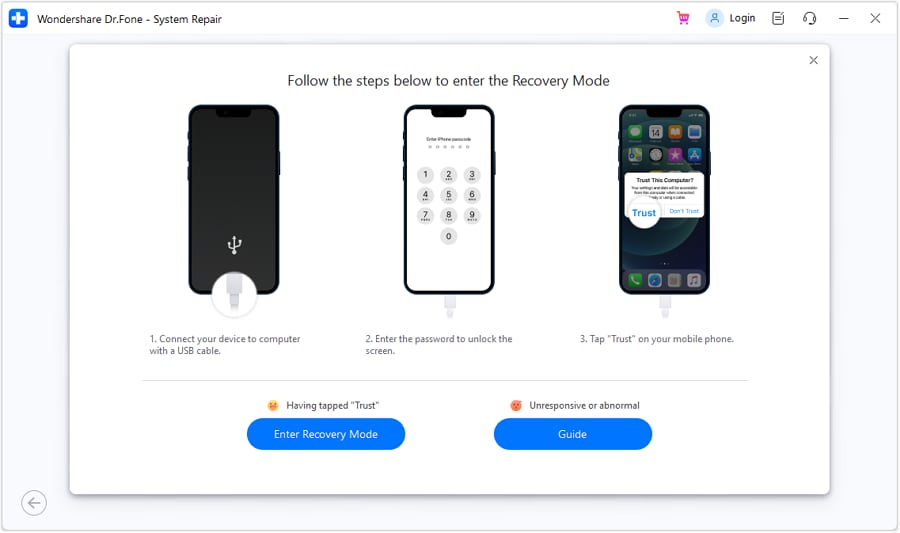
Step 5: The platform will detect the appropriate iOS firmware for your device. Click Download next to the firmware you want to install.
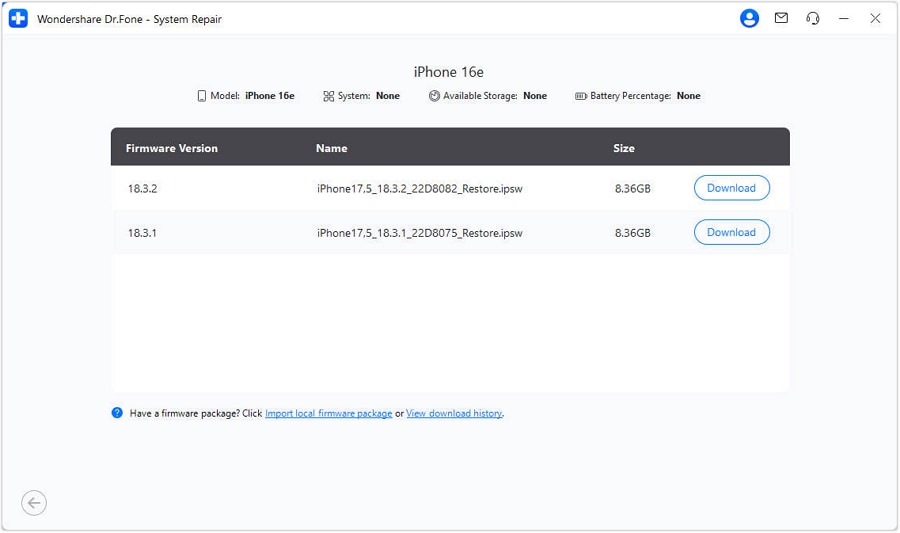
Step 6: Click Repair Now to proceed with the installation on your iOS device. Wait for the process to complete, keeping your device connected to the computer. Once the process is complete, select Done to finish and start using your iOS device.
Part 4: Tips to Overcome the iPhone Running Slow Problem
Here are some additional tips to help keep your device running smoothly to avoid the iPhone lagging problem:
- Regularly update your iOS and apps.
- Don't overload your iPhone with unnecessary apps.
- Clear cache and temporary files regularly.
- Avoid extreme temperatures, as they can affect your iPhone's performance.
- Use original Apple accessories, especially for charging.
- Minimize the use of live wallpapers and widgets.
- Turn off background app refresh for apps you don't use frequently.
By following these tips, you can help ensure your iPhone stays responsive and doesn't start lagging over time.
Conclusion
Fixing a slow iPhone can be annoying, but there are several ways to handle this problem. You can start with basic steps like restarting your phone and freeing up space, and move on to more complex solutions like resetting network settings or using repair tools. Now you have a full set of options to help speed up your iPhone.
Keep in mind that regular care is important for keeping your iPhone fast. By using the tips we've given and keeping your phone updated and your storage managed, you can avoid many problems that make iPhones slow.
FAQs
iPhone Issues
- iPhone Storage Full
- 1. Stuck on Apple Logo Storage Full
- 2. Erase Content Settings not Working
- 3. iPhone Lagging
- 4. iPhone Running Slow
- iPhone Update Problems
- 1. Stuck on Updating iCloud Settings
- 2. iPhone Frozen During iOS Update
- 3. iPhone Checking for Update Stuck
- 4. iPhone Cellular Update Failed
- 5. iPhone Software Update Failed
- 6. iPhone Stuck on Update Requested
- 7. iPhone Update Error 1110
- 8. iPhone Stuck On Verifying Update
- 9. iPhone Won't Update
- 10. Update Server Couldn't Be Contacted
- 8. iPhone & iPad Security Updates
- 9. Update iPhone with/without iTunes
- 10. Can't Download or Update Apps
- iPhone Media Problems
- 1. Apple Music Song Not Available
- 2. iPhone Not Ringing
- 3. iPhone Echo Problem
- 4. iPhone Ringer Problems
- 5. iPhone Plays Music by Itself
- 6. Ringer Volume Changes by Itself
- 7. Music Won't Play on iPhone
- 8. Blurry Photos & Videos on iPhone
- 9. iPhone Volume Problems
- iPhone Sound Problems
- 1. YouTube no Sound
- 2. iPhone Microphone Problem
- 3. Test iPhone Microphone
- 4. Headphones No Sound from iPhone
- 5. No Sound on iPhone Game
- 6. iPhone Sound Not Working
- 7. iPhone Screen Recording no Sound
- iPhone Calling Problems
- 1. iPhone No Sound on Calls
- 2. Screen Goes Black During Call
- 3. iPhone Recent Calls Not Showing
- 4. iPhone Dropping Calls Issue
- 5. iPhone Calling Problem
- iPhone Camera Problems
- 1. iPhone Camera Black
- 2. iPhone Camera Blurry
- 3. iPhone Camera Not Working
- 4. iPhone Front Camera Not Working
- 5. TrueDepth Camera Not Working
- 6.Out-of-Focus Photos on iPhone 15
- iPhone Network Problems
- 1. Airpods Won't Connect to iPhone
- 2. iPhone Disabled Connect to iTunes
- 3. iPhone Not Syncing Problems
- 4. iPhone Internet Not Working
- 5. iPhone Keep Disconnecting from Wifi
- 6. iPhone WIFI Not Working
- 7. PC Not Recognizing iPhone
- 8. iPhone Stuck on Connect to iTunes
- 9. iPhone Not Showing up in iTunes
- 10. iTunes Not Detecting Your iPhone
- 11. iPhone Bluetooth Disconnect
- 12.Apple CarPlay Keeps Disconnecting
- iPhone Screen Problems
- Other iPhone Problems

















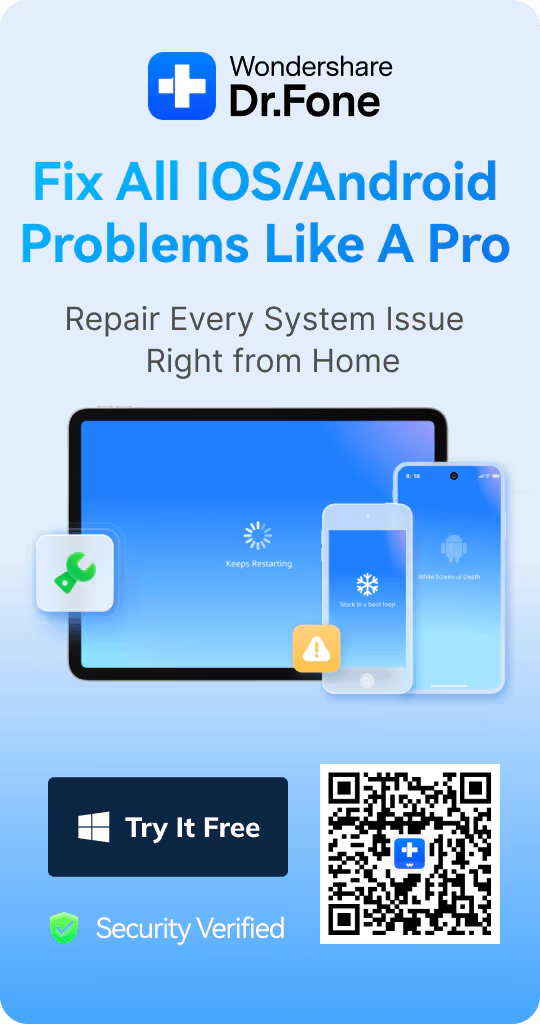
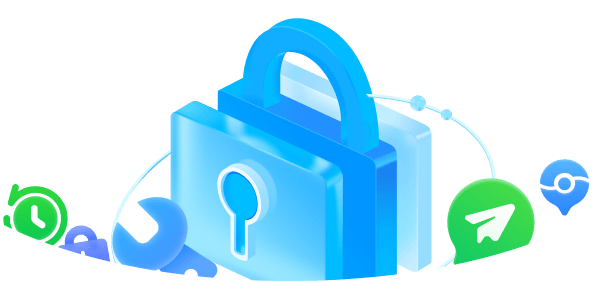
Alice MJ
staff Editor
Generally rated4.5(105participated)